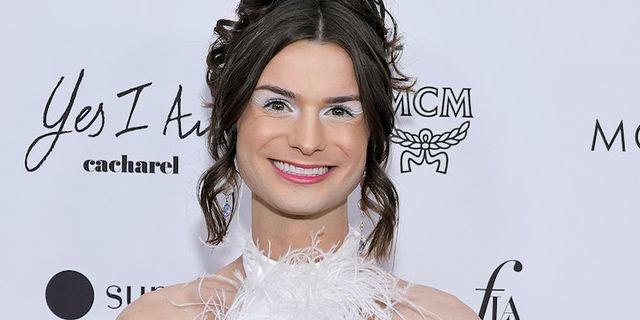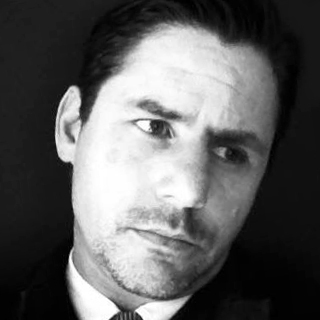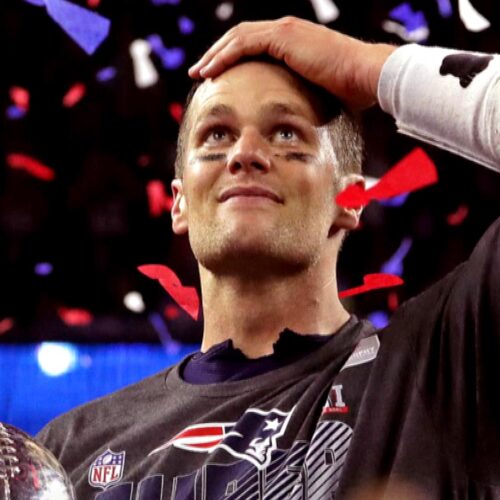
I am reading a book that has me spellbound: “Anything You Can Imagine: Peter Jackson and the Making of Middle-earth” by Ian Nathan. I have always been an avid Lord of the Rings fan, both the books and movies. So naturally, I am interested in this biography retelling details of Peter Jackson’s journey from acquiring the rights to the books to the making of the movies, and the incredible daring and perseverance it took to turn those novels into a billion-dollar theatrical release that is still enthralling fans worldwide.

In the introduction of this book, Andy Serkis, the actor who played the unforgettable character Gollum, says this about Peter Jackson and the Lord of the Rings movies: “It feels like there was a life before and a life after.” This statement, in a very subtle way, perfectly sums up the power that daring works of creative genius can have on people and culture. Before both the books and movies were ever made no one had conceived of a place called Middle Earth. The fantasy genre in general was not taken that seriously by popular culture and elves and dwarves were only seen as cartoonish figures who made cookies in a tree. But after both books and movies dropped into the general public consciousness, all of this changed.
A brave new world called Middle-earth was imagined by these two men, and millions love them for it. A small unassuming Brit named J. R. R. Tolkien and a daring horror-loving New Zealander named Peter Jackson believed in what could be concerning the prospects of an epoch fantasy trilogy. And because they dared, modern fiction writing and movie-making have never been the same. This same principle is true with every classic creation, invention, and even popular song — there is a world before and a world after.
But with that being said, what fascinated me the most about this book concerns a completely different question. It is the simple question of “why?”. Why did Peter Jackson’s movies become so popular, even to the point that they withstood the passage of time? Especially when it comes to the fantasy genre, a genre that only seemed to interest a small group of quirky odd thinkers dwelling in the sub-culture of fictional fandom. Why did Middle-earth captivate hundreds of millions of people around the world? And if there is an answer, I wonder if it can be translated to other creative endeavors like writing, painting, singing, and even preaching.
Well, in my reading, I think I found it. Like discovering a hidden vein of gold in an old forgotten mine shaft, I found something that I believe made Peter Jackson’s art so powerful and enthralling. The author Ian Nathan describes Peter Jackson as having a great store of talent, he was both a brilliant storyteller and technical wizard, but what really made Peter successful was one governing principle he directed his movies by: “I wanted to make everything feel like it was real…don’t treat it (Middle-earth) as fantasy, but as a piece of the past.”
As he worked with his team of writers and artists he wanted them to follow a process of “collective integrity.” In other words, he wanted them to keep creating until it made sense to the world they were working with. Collective integrity included everything from the costumes, finding the perfect actors for the roles, to the landscapes that were created, all the way to the detailed doorknobs on a tavern door. Peter would push his creative team to keep working on their art until it fit. To get there, they followed a ‘natural selection’ process where everything needed to inherently coalesce with the way the world of Middle-earth worked. It had to feel right, it was an instinctive knowing. Peter Jackson was desperate to arrive at the authentic “so the audience would suspend disbelief for the time that they’re there.”
That’s it! That is the answer to my question of why. And that is why it worked. It is so obvious, but so often forgotten — every aspect needed to fit the world that was being created. People who watched the movies believed that these rather strange characters like Gandalf the Grey Wizard, Frodo the Hobbit, and Aragorn the King actually were alive. And the threat of the ring was an ever-present danger that needed to be eradicated at all costs. “Collective integrity” is the key to true believability.
And then it hit me like an electric shock — this is why “woke” culture doesn’t really work on any level, nor will it have a lasting impact. This is not just true in woke movies and creative works, but wokeness does not really work when it comes to reality itself. The reason is simple, woke does not contribute to the “collective integrity” of what actually is. Let me explain.
First things first, we must define what is meant by “woke.” There is a lot of confusion in simply defining this term.
From my perspective, I believe that there is a good “woke” and a bad “woke.” The good kind of “woke” started as an ethical movement that tried to get people to wake up to the cultural realities of a fallen world where a large proportion of people in power often took advantage of those living on the margins. Good “woke” was simply calling for a compassionate understanding and empathy of those who have been systemically left behind, and even help right the wrongs of the past in a fair way.
But over time, this good “woke” splintered off into the popular perverted form which I am calling the bad “woke.” The bad “woke” is derived from Neo-Marxist jealousy that is constantly trying to create out of whole cloth a new world that doesn’t exist. Those pushing this form of bad “woke” use the term equity as a bludgeoning tool to gain power over other people. Bad “woke” promotes a bald-faced lie that what I want to be true — no matter how crazy, how extreme, how ridiculous — can be true as long as people get out of my way and let me be anything I want to be. And as I move toward the goal of achieving my “true self” (a made-up construct) everyone must support and celebrate my efforts regardless of how strange or perverse they may be. And if they don’t, they are perpetuating hate against me.
But this is not how reality works. Nor will it ever work this way. And if we keep insisting that this bad form of “woke” must be accepted, it will end up destroying what was once beautiful, good, and right. Bad “woke” doesn’t work because it is not real, it does not contribute to “collective integrity”, which means it just doesn’t fit into what is no matter how badly people want to force it.
Take Dylan Mulvaney as a prime example. He is a transgender rights activist known for detailing his gender transition in daily videos on the social media platform TikTok. According to one source, “As of March 2023, she has over 10 million followers on TikTok, while her video series, Days of Girlhood, has received over one billion views.” Notice how this news source perpetuates Dylan’s lie that he is a she. We are supposed to believe reality can be strong-armed into Dylan’s own personal construct simply because he wants it to be true. But people immediately see the disconnect, they cannot suspend their disbelief in honest faith because there is no collective integrity to Dylan’s silly charade.

Dylan wrongly assumes a woman’s essence resides in having the right type of hair, makeup, dresses, and sporting a silly femme lisp. But everyone knows that Dylan could not last a moment if he was expected to actually take on the everyday role of a real woman. A real woman is a woman on the inside regardless of makeup and dress. There is an inner strength to a real woman that Dylan knows nothing of. A real woman does not parade around trying to garner the attention of a fickle media.
Everyone will soon be forced to admit that what they see behind the curtain of bad “wokeness” is nothing more than a silly game played by spoiled children.
Entertainment by the bad “woke” progressives clearly is not working either. In order to get an audience, bad “wokeness” has been stealing another person’s popular intellectual property that already has an established fanbase. This is mainly because bad “wokeness” does not really know how to create, so it steals. “Wokeness” is parasitical. Peter Pan is the latest victim in the progressive I.P. takeover where this old classic has been retooled to represent a modern audience in the upcoming film, Peter Pan & Wendy. Raise your fist and shout, “Long live Diversity, Inclusion, and Equity! Here, Here!” Hollywood elites are cutting and pasting the beloved classic characters of the past with newer culturally acceptable race and gender types to make the bad “woke” gatekeepers feel good about themselves.

Story no longer matters because with bad “woke” productions when politics takes center stage. But people don’t pay good money to watch political messages.
I don’t need to delve too deep into this because we all know that just is the way it is now. The red-headed Danish mermaid, Ariel, is now urban and black. Pinocchio’s fairy with turquoise hair has been replaced by a bald-headed black woman. Shaggy, the white male lead in Scooby-Doo is now the black nerd, Norville, in the adult cartoon spin-off of Velma on HBO Max.
It’s not the changes that are inherently the problem but that they lack sincerity, it is agenda-driven, not a choice made from inspiration. That’s the real problem. And now Peter Pan is getting a complete progressive makeover — the Lost Boys have girls in it, blond-haired Tinkerbell is a cute black girl, and the once composed and mature Wendy is now just as much of a swash-buckling sword fighter as Peter Pan once was. This does not accurately represent this beloved story as it’s been known to audiences over the last 100 years. Congratulations, Disney, you did it again. Another bad “woke” disaster.
The good news is, all of these stolen creations will never work because they have no “collective integrity.” They don’t ring true, therefore, they don’t have what it takes to last. And most of all, bad “wokeness” just has the audience longing for the world that was before the woke trash ever appeared in the first place. There is no real life after because nothing real has been created in the first place.
True creative genius must ring true to what is if it ever hopes to stand the test of time.

Christopher J. Weeks is an author and has been a bartender, rugby player, salesman in the Chicago loop, teacher in Russia, and now for the last 25 years, he has been pastoring with his wife and four children at a rural church amidst the apple orchards of West Michigan farmland.





